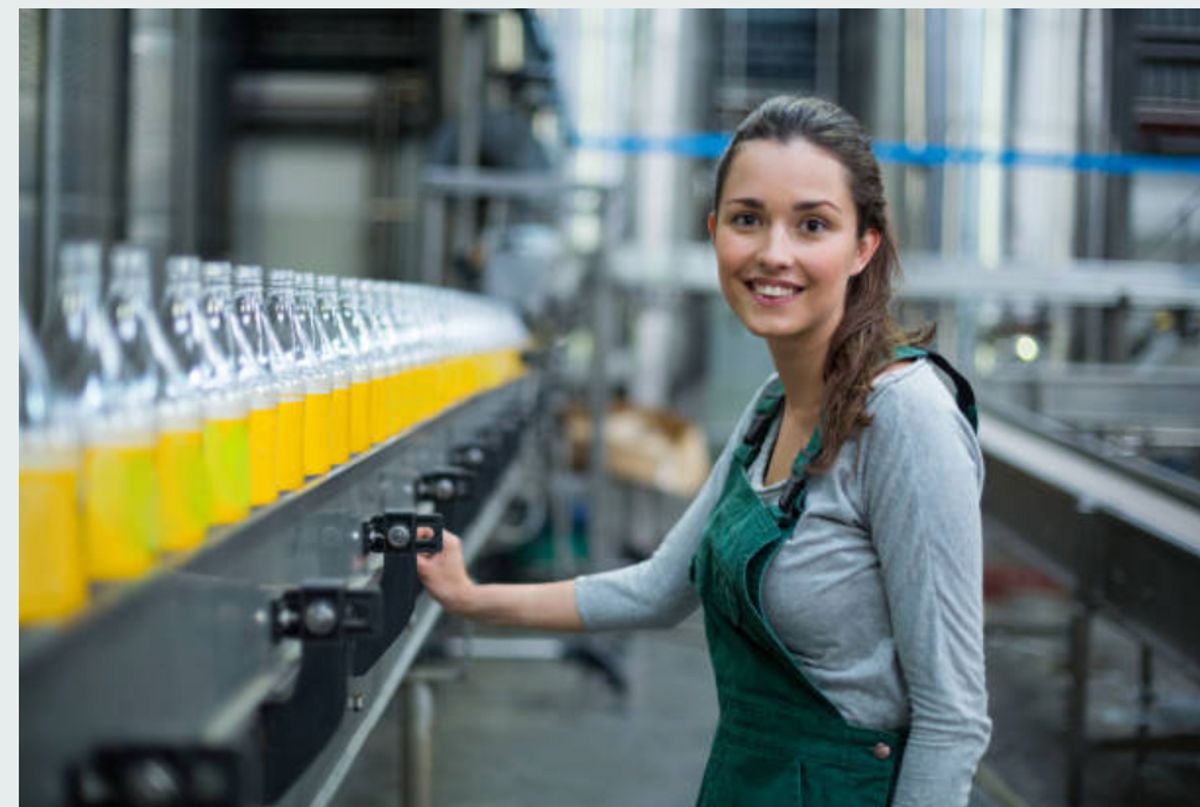Using energy intelligence to avoid waste, improve costs and think sustainably
The food and beverage industry (dairy processing, meat processing, bakeries, brewing and distilling, soft drinks, fruit and vegetable processing, etc.) has always been in a constant state of flux, but even more so in recent times. Plant and production managers have to cope with seasonal and crop variations, changes in energy and raw material pricing, and demands from sales and marketing to manufacture new products. Even if you were running your plant at its optimum two years ago, it’s very likely that that optimum is going to look completely different today!
Change in Food and Beverage Manufacturing
Change is being fuelled by factors such as: technological advancements, new legislative restrictions, and a complete transformation of the supply chain. Now add in rising prices for raw materials, energy, and labour, and stagnating consumer incomes, plus fierce competition and pricing pressure from retailers - it all makes for an extremely challenging industry to operate in, where decent profit margins are harder and harder to come by. Unless, you can operate your plant in a much more dynamic way.
Pressure on food and beverage companies to minimise waste and maximise resources has never been greater. Pressure is coming from both regulators and consumers. Consumers are buying products based on a brand's environmental credentials and its commitment to sustainability. They also want 'clean labels,' plant-based options, and preservative-free recipes, which puts a strain on the cold chain to ensure safety and quality.
Food and beverage regulation is complex, and creating the best methods for compliance, and protection of staff and consumers can be challenging, especially when trying to produce sustainably and safely across diverse supply chains. To add to these challenges, the raw materials for many processes vary from season to season, farm to farm, and supplier to supplier - the manufacturer must balance out all this variability to create quality consistently.
With narrow margins, food and beverage companies tend to “sweat” ageing (but critical) assets, they are often operated well above capacity, leading to reliability and variability challenges. But this sector is one of the most energy-intensive in the world and it is responsible for a large portion of global energy consumption. That means energy management in this industry is of paramount importance to create a more sustainable future.
So what’s to be done? Let’s look at some of the challenges and then how you can ensure performance, safeguard quality, and strengthen your brand with smarter use of energy.
Energy Challenges
From growers to manufacturers, to processing, storage, and cold chain, right through to distribution and retail, narrow profit margins seem like an inevitable part of the business.
- High cost of energy: the industry relies on an extensive use of refrigeration, heating, air compressors, and other energy-intensive equipment across production processes.
- Energy efficiency and waste: Ageing assets, building management system overrides, off-hours consumption or equipment being run inefficiently all result in costly energy inefficiency and waste.
- Perishable feeds and products: Problems with heating processes or refrigeration equipment in the cold chain, or at supermarkets can easily lead to failure in meeting safety standards, leading to costly repairs, food waste, lost income, and a damaged reputation.
- Sustainability: Carbon emissions come from many sources: agricultural production, transportation, processing and packaging to name just a few. Only by identifying supply chain emissions hotspots, can suitable strategies to reduce your carbon footprint be rolled out.
In order to effectively manage energy it is crucial to have a thorough awareness of how much energy is used throughout the whole supply chain. The energy sources used to power all processes must be identified and evaluated including electricity, natural gas, steam , and other fuels. Visibility into energy usage can help companies boost operational efficiency and reduce costs.
Leading food and beverage companies are increasingly leveraging data to transform their businesses and accelerate their journey towards energy efficiency, resilience and sustainability.
Production and Energy Data
Boilers and refrigeration systems are often the primary sources of energy consumption. There are ways to optimize biomass boiler performance, such as continuous fuel analysis.
The real challenge is figuring out what’s creating the demand within the facility for that cooling and heating load. The implementation of a wide-scale network of digital sensors and monitoring devices will capture and communicate all your energy consumption data. The sensors measure energy parameters related to observation systems too (including power, gas, water, and wastewater).
Energy management system
An energy management system (EMS) can process all your data providing invaluable energy insights across multiple facilities. It determines the most cost-effective configuration of energy production, and distribution throughout the plant while considering the criteria for system stability, safety, and reliability too. An EMS provides the information and computation capability to perform real-time network analyses, and to come up with strategies for controlling system energy flows, and help determine the most economical mix of generation (import and export) of heat and power.
Efficient refrigeration
The food industry relies on refrigeration systems to keep its products fresh. It is also a major energy consumption point. Often there are considerable opportunities to reduce power demand: adjusting suction and discharge pressure, checking for air leaks and exchanger fouling, insulation, and equipment configuration. Within the machine rooms installation of variable speed drives (VSDs) cuts energy use without sacrificing output, for example, compressors can run at a reduced capacity when the right temperature is reached.
Harnessing waste heat
Boilers, motors and cooling systems all produce waste heat that can be reused using technologies such as heat integration, industrial heat pumps and thermal batteries. Heat integration involves understanding when heat enters and leaves your systems so heat can be used in other processes instead. Heat pumps upgrade heat in a compressor, collecting heat at a low temperature and returning it at a higher temperature. Thermal batteries store heat (by heating up water, steel or another medium) so it can be used later. Learn more about heat electrification using multi-effect evaporators by watching this masterclass.
Green energy
Energy prices are rising and are likely to remain in flux so generating your own energy to fully or partially power facilities makes sense. Sunny areas are well disposed towards solar panels while other locations can benefit from wind power. Food industries are suited to converting unwanted by-products into biofuel and also for use in equipment such as biomass boilers .
LED lighting
Lighting can be a major electricity sink and older forms of lighting can generate a lot of unwanted heat, particularly undesirable in conditioned or refrigerated spaces. Modern commercial LED lighting systems are significantly more efficient than older bulbs. LED bulbs also have a predicted operational lifetime expectation of up to 50,000 hours.
Reduce food waste
Globally, over 25% of all food produced is wasted. It’s one of the largest contributors to climate change, contributing 81% of all greenhouse gas emissions. It is a significant problem throughout the supply chain; in agriculture, food production, transport, packaging, storage, distribution, and in the consumption phase and final disposal. Companies must look at the data to understand process and raw material variability and seek out opportunities to reduce waste. Process control and active process quality monitoring can lead to long-term, sustained reductions in waste.
Communication and Collaboration
Last but definitely not least, and this might seem obvious but it's something our CoolPlanet experts see all too often. Whether it's edible oils, dairy or brewing, lack of communication across departments causes much avoidable waste. For example, boilers unnecessarily running in standby all the time, air compressors running flat out then blowing off excess air, or chillers left running during shutdown. A good communication framework with regular meetings, sharing information, energy reports, and simply making sure everyone is aware of upcoming changes to the schedule can save energy and avoid waste. There are a number of standards and frameworks to assist you here. CoolPlanet’s preferred one is ISO 50001 for Energy Management Systems.
At CoolPlanet we have been helping food and beverage companies worldwide to gain energy insights and implement energy efficiency strategies that vastly reduce costs and reduce emissions. We do this through a perfect marriage of deep industry expertise and CoolPlanetOS , our best-in-class energy management platform.
How CoolPlanet Helps
At CoolPlanet we have been helping food and beverage companies worldwide to gain energy insights and implement energy efficiency strategies that vastly reduce costs and reduce emissions. We do this through a perfect marriage of deep industry expertise and CoolPlanetOS , our best-in-class energy management platform, alongside our capability to execute decarbonisation engineering projects.





